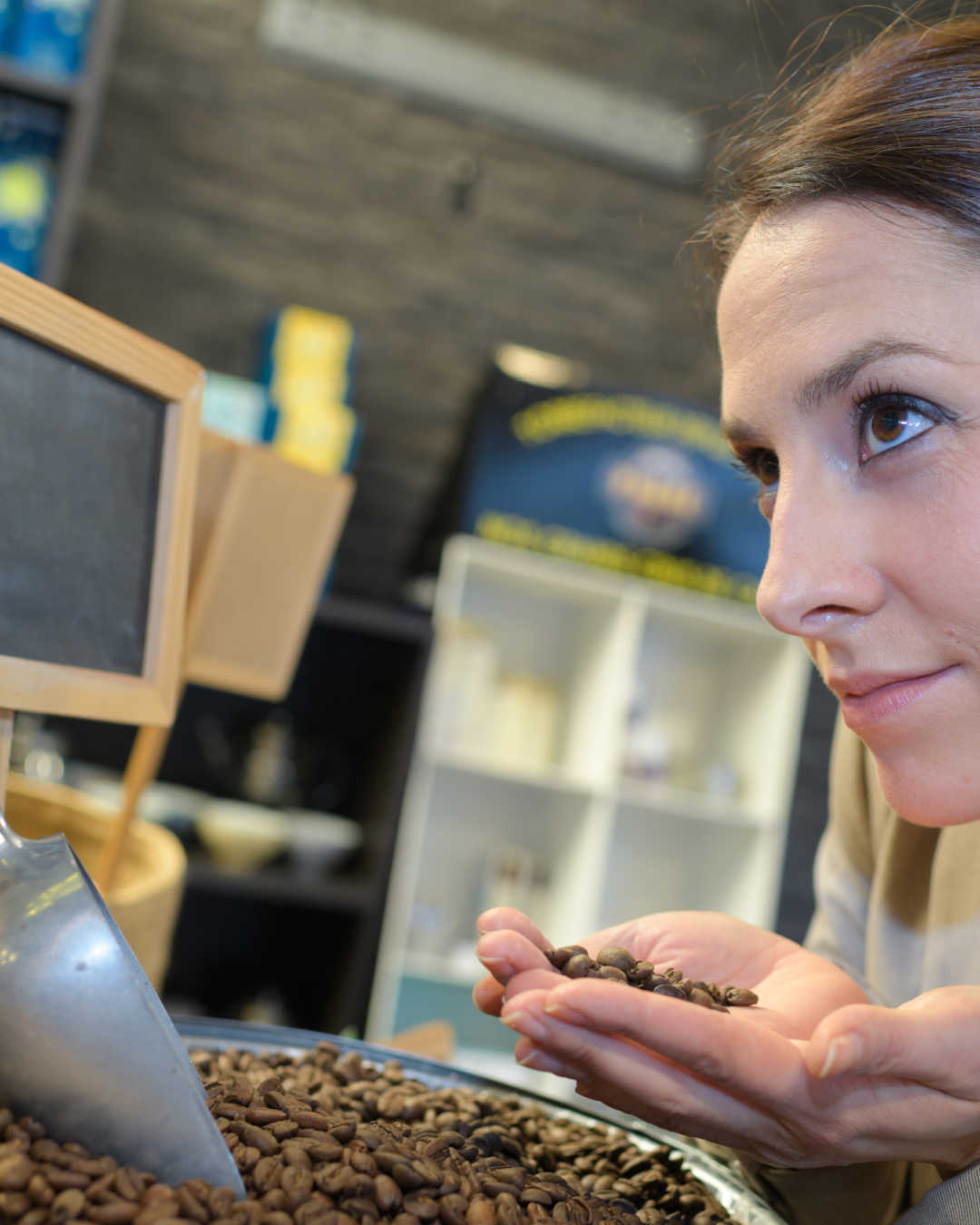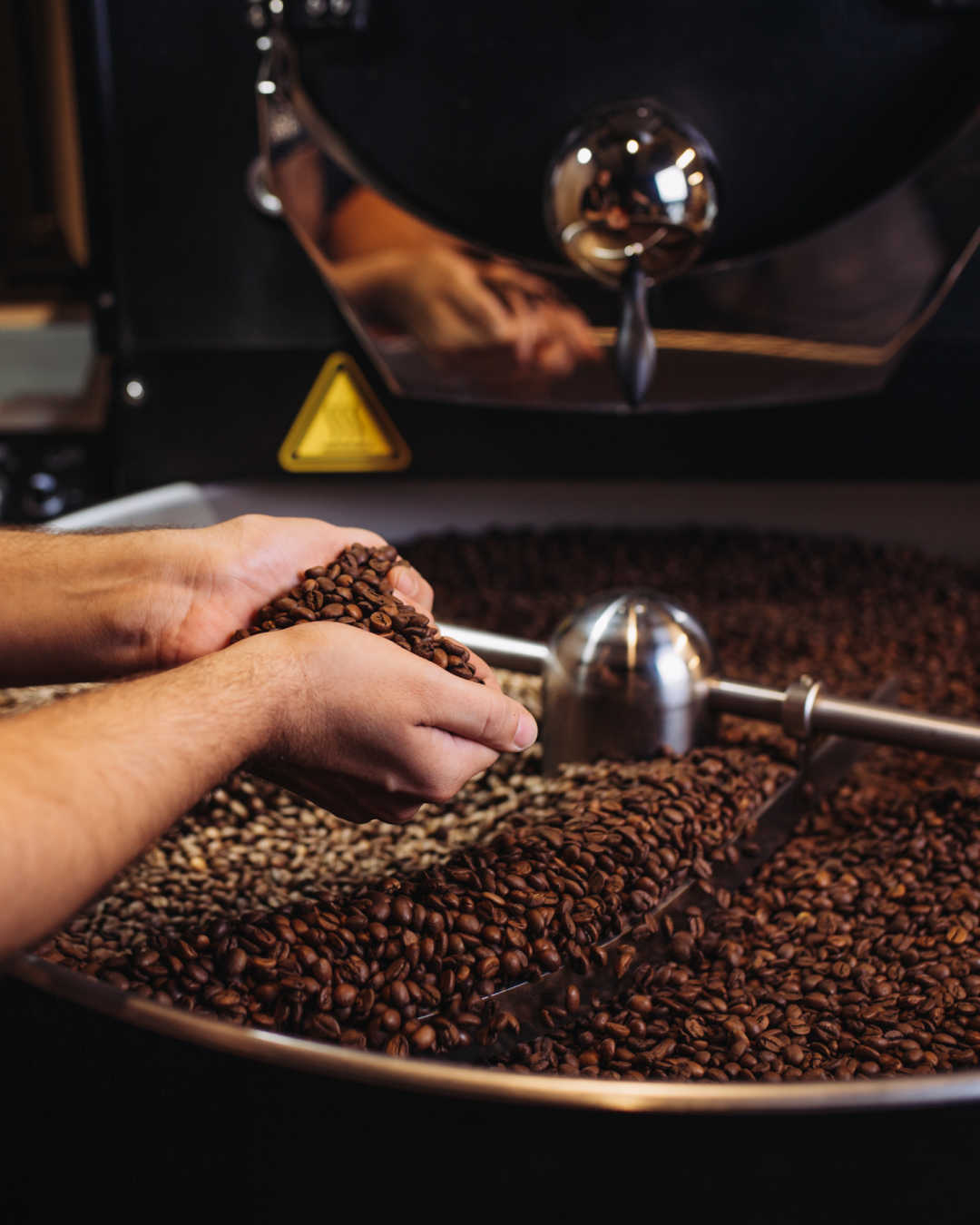
Very broadly-speaking, many coffee drinkers think Arabica beans with a medium roast generally make the best coffee to be consumed “black” (no added sweeteners or creamers).
Beans are the heart of the black coffee experience, and choosing the right ones can make all the difference. In this guide, I’ll share what I’ve learned for selecting the best beans that suit your taste preferences and brewing style, whether you’re a seasoned coffee lover or just starting your journey.
Factors That Influence Your Choice
To make an informed decision when selecting coffee beans, it’s important to consider various factors:
- Origin of the beans
- Roast level
- Flavor profile
- Freshness
- Price
Any choice you make will reflect your unique preferences, so take your time.
Understanding Coffee Beans
The world of coffee beans is diverse and waiting to be explored. Each type of coffee bean carries unique characteristics that can significantly influence your brewing experience. It’s important to recognize these differences to select the right bean for your black coffee. When choosing the right coffee for your cup, understanding the various types and their flavor profiles will guide your decision.
Different Types of Coffee Beans
Recognizing these varieties will help you appreciate each bean’s unique qualities and select the best one for your taste.
The four main types of coffee beans include:
| Type of Bean | Characteristics |
| Arabica | Smooth, sweet, and complex flavor |
| Robusta | Bitter, strong, and more caffeine |
| Liberica | Floral, fruity, and aromatic |
| Excelsa | Dark, fruity, and tart |
Arabica and Robusta are by far the most common types of coffee beans.
Each type of bean brings its own set of tastes and aromas, making the experience of brewing and drinking coffee more interesting. Understanding these profiles allows me to match the right bean with my preferred brewing method and desired flavor notes.
The flavor profiles are influenced by various factors such as the region and altitude the beans are grown in, and processing methods. For example, Arabica beans often have a sweeter and more nuanced flavor profile, perfect for those who enjoy a milder cup. In contrast, Robustas are bold with earthy and nutty flavors, catering to those who seek something stronger.
How-to Choose the Best Beans
There’s a world of flavor waiting in your cup, and it all starts with choosing the right beans.
Consider the Roast Level

Some people prefer the bold flavor of dark roasts, while others enjoy the brighter notes of a lighter roast. When choosing your beans, think about how you like your coffee’s taste profile:
Light Roast: These roasts are typically lighter in color, with a higher acidity and more delicate flavor notes. They often highlight the natural characteristics of the coffee bean, such as fruity or floral aromas.
Medium Roast: Medium roasts achieve a balance between acidity and sweetness, with a more developed body. They often have a smooth and balanced flavor profile, with notes of nuts, caramel, or even chocolate.
Dark Roast: Dark roasts are characterized by a more intense flavor, with prominent notes of chocolate, nuts, and sometimes smoky or bitter undertones. They typically have a lower acidity than lighter roasts.
Personally, I love experimenting with different roast levels to find the ideal balance that satisfies my palate (though I admit I’m starting to lean towards the medium roasts).
Look for Freshness and Quality
Choose beans that are freshly roasted for the best flavor. I always look for the roast date on the packaging, as this indicates how recently the beans have been processed. Fresh beans can elevate your coffee experience significantly, enhancing its aroma and taste.
If the beans are old, they start to lose their flavors and may even taste stale. I aim to buy smaller quantities of beans so they can be consumed quickly, ensuring I always enjoy the freshness. Purchasing from local roasters can guarantee better quality and freshness, making your morning coffee a better experience!
Reading Coffee Labels
You’ll want to pay attention to coffee labels as they provide important information about the beans. Quality labels often feature details like the origin, processing method, and roast level, giving you insights into what to expect from your cup. If the label indicates transparency in sourcing, it typically signals a commitment to quality. When I read the labels, I look for these specifics to ensure I’m choosing the best beans for my taste.
Beans should be your focus when pouring over coffee labels. They can reveal a lot about the flavor and quality you’re likely to experience. Look for factors such as altitude and region, which play a significant role in how the beans taste. Additionally, consider the processing method; washed beans often have a cleaner flavor profile, while natural processed beans can offer fruity notes. By understanding these details, I can tailor my coffee selection to match my preferences perfectly.
Personal Taste Preferences

One of the first things to consider is your personal taste preferences. Do you enjoy fruity or nutty flavors? Are you looking for a bright acidity or something bold and chocolatey? Understanding what appeals to you will help narrow down your options and ensure a satisfying cup.
Brewing Method Considerations
That said, the brewing method you prefer can significantly impact the beans you choose. Different methods, such as French press, espresso, or pour-over, can highlight unique characteristics of the coffee. Each method extracts flavor differently, making it important to select beans that complement your technique.
Your choice of brewing method affects not only the flavor but also the grind size and freshness of the beans. For instance, espresso requires a fine grind and fresher beans to achieve that rich flavor profile, while a French press works well with coarser grounds. Tailoring your bean selection to your brewing method can elevate your coffee experience.
Tasting and Comparing
Little tweaks can lead to remarkable discoveries. On my coffee journey, I’ve found that keeping a journal is a fantastic way to track my impressions. It allows me to note down what I liked or didn’t like about each tasting, making it easier to refine my preferences as I explore.
For instance, I often jot down the bean origin, roast level, and tasting notes alongside my initial impressions. This practice not only helps in identifying patterns in what I enjoy but also enhances my overall coffee appreciation. Plus, it’s interesting to look back and see how my taste has evolved over time.
Here is a simple coffee tasting PDF form you can download and print to help you.
As you explore your options, I recommend checking out this more detailed guide on How To Choose The Best Coffee Beans to help you navigate the selection process.
Storing Your Beans
All coffee lovers know that the way you store your beans can make a big difference in flavor. For optimal freshness, I recommend keeping your beans in an airtight container, away from light, heat, and moisture.
Best Practices for Freshness
Any time I buy fresh coffee beans, I always make sure to use them within a few weeks for the best flavor. Many experts suggest storing them in a cool, dry place and using a grinder just before brewing to preserve the taste and aroma. Vacuum-sealed options can also help extend their shelf life. When you treat your beans right, you’ll truly enjoy each cup of coffee!
Common Mistakes to Avoid
While it’s easy to overlook, there are a few storage missteps to watch out for if you want your coffee to stay fresh. One big mistake is keeping your beans in the original bag they come in; these are often not airtight. Another misstep is storing them near heat sources, like the stove or sunlight, which compromise their freshness. Learning to store them correctly will surely enhance your coffee experience.
Common pitfalls also include buying excessive quantities of coffee beans and neglecting to check the roast date. It’s best to purchase smaller amounts more frequently so you can enjoy the coffee at its peak freshness. Additionally, using your coffee beans too far into the past can lead to stale flavors, diminishing the joy of your morning brew.
Summing up
I hope you now feel more confident in selecting the best beans for your black coffee. Choosing the right beans can truly transform your coffee experience. Whether you prefer light, medium, or dark roasts, I encourage you to explore different varieties and find what suits your taste buds. Trust your instincts and enjoy the journey of discovering your perfect cup.